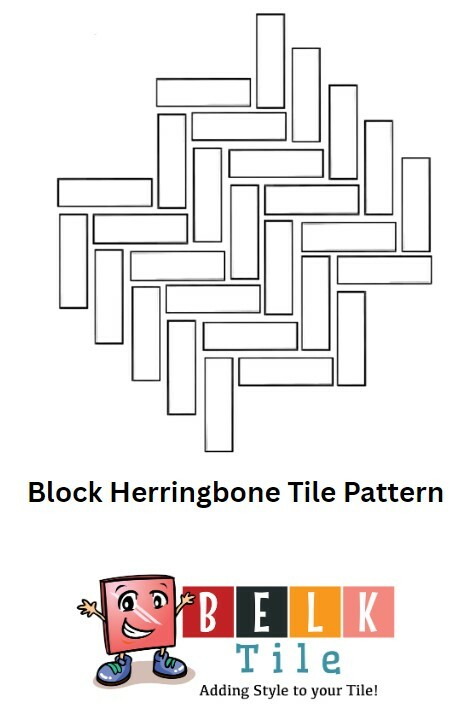
Block Herringbone Subway Tile: A Fresh Take on Backsplashes
Block herringbone puts a modern spin on classic subway tiles, offering a visually rich layout with straightforward installation. If you want a backsplash that reads as both elegant and energetic, this pattern is an excellent choice for kitchens, baths, and feature walls.
What Is the Block Herringbone Pattern?
The block herringbone pattern arranges rectangular tiles so that each tile alternates direction at right angles, forming a staggered zigzag that’s simpler than traditional herringbone but still full of motion and texture. It keeps the familiar look of subway tiles while adding a structured, rhythmic layout.
Why choose block herringbone for a backsplash?
- Distinctive look: Adds depth and movement without overwhelming your space.
- Scale versatility: Works with a range of tile sizes—from smaller 2x6 subway tiles to larger 3x12 or 4x12 tiles.
- Design flexibility: Compatible with glass, ceramic, porcelain, metal, and stone tiles to suit different styles.
- Attention-grabbing focal point: Easily becomes the centerpiece of a kitchen or bath design.
Tile Size, Orientation & Visual Effect
Tile dimensions and grout width significantly influence the final look.
Tile sizes that work well
Smaller tiles (e.g., 2"x6") produce a tighter, intricate pattern; larger tiles (e.g., 3"x12" or 4"x12") create a bolder, more graphic effect. Choose tile size based on the scale of your backsplash area and the level of visual activity you want.
Orientation and grout considerations
Installing block herringbone with a narrow grout joint yields a clean, continuous surface; a wider grout line emphasizes the geometry and contrast. Consider grout color as part of your design—matching grout blends the tiles into a smooth field, while contrasting grout highlights the pattern.
Materials & Finishes
Different materials deliver different personalities:
Glass
Reflective and luminous — great for adding depth and brightness behind a stove or sink.
Ceramic & Porcelain
Durable and low-maintenance; widely available in subway sizes and finishes from matte to high gloss.
Metal & Stone
Metal tiles add an industrial or contemporary edge; natural stone brings warmth and texture but may need more maintenance depending on the finish.
Design Tips & Placement Ideas
Accent zones
Use block herringbone as an accent behind a range hood or inside an open shelving niche to create a framed focal point.
Full-run backsplashes
Run the pattern across the entire wall from counter to upper cabinets for maximum impact. Consider using a subtle grout color for a seamless look or a contrasting grout to emphasize the pattern's geometry.
Mixing with other patterns
Pair block herringbone with plain field tiles or a simple border to balance visual interest. It also works well alongside linear subway rows or stacked tile fields when used sparingly.
Practical Installation Notes
Layout planning
Dry-lay a section or sketch the layout on paper to determine alignment and cuts. Because the pattern alternates directions, plan grout lines and edge transitions carefully to minimize awkward small cuts at cabinet or corner edges.
Use tile spacers and levelers
Consistent spacing and flatness help the pattern read cleanly—use spacers and leveling systems for a professional finish.
When to call a pro
If your backsplash includes outlets, open corners, or irregular walls, a professional installer can ensure neat transitions and correct tile placement.
Maintenance & Care
Most block herringbone backsplashes require the same care as standard subway tiles: wipe spills quickly, use non-abrasive cleaners, and reseal natural stone or porous materials as recommended by the manufacturer.
Find the Right Tile for Your Project
Explore glass, ceramic, metal, and stone subway tiles to build a block herringbone backsplash that reflects your style. Browse Kitchen Backsplash Tiles or Herringbone tile shapes to get started.


